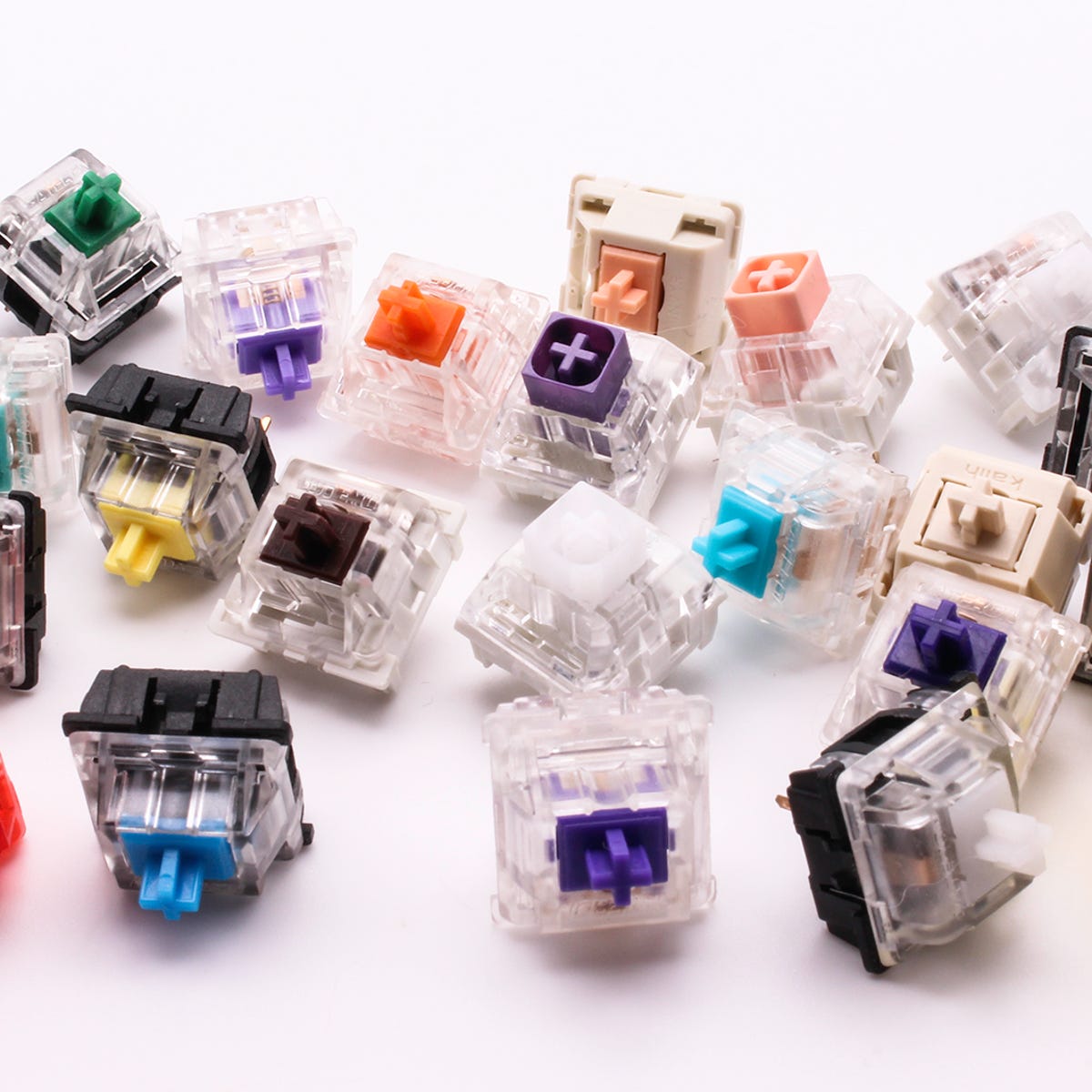A comprehensive guide to the anatomy of a mechanical keyboard, providing accurate and concise information in just two sentences. Then, an introduction focusing on key aspects, such as the importance of understanding the components, the rising popularity of mechanical keyboards, and the increasing need for a comprehensive guide to help individuals make informed choices in the midst of a saturated market becomes essential.
Mechanical keyboards have gained significant popularity in recent years, and their unique feel and performance have made them a favorite among gamers, programmers, and writers alike. However, understanding the intricate anatomy of a mechanical keyboard can be overwhelming, especially for those new to the world of mechanical keyboards.
With a vast array of switches, keycaps, and other parts available, having a comprehensive guide at your disposal becomes crucial in order to make informed decisions and fully appreciate the benefits of a mechanical keyboard. In this guide, we will explore the various components that make up a mechanical keyboard to help you navigate through the options and find the perfect fit for your needs.
Key Components
The key components of a mechanical keyboard are crucial in defining its performance and feel. Understanding the anatomy of a mechanical keyboard involves delving into the intricate details of its key components – switches, keycaps, PCB (Printed Circuit Board), and stabilizers.
Switches
Switches are the foundation of a mechanical keyboard’s feel and functionality. They determine the actuation force, tactile feedback, and noise level of each keystroke. There are various types of switches available on the market, including clicky, tactile, and linear switches, each offering a unique typing experience.
Keycaps
Keycaps are the visible and touchable part of the keyboard, providing the user with the physical interface for typing. Available in different materials such as ABS, PBT, and even custom artisan keycaps, they play a significant role in the overall aesthetics and tactile feedback of the keyboard.
Pcb (printed Circuit Board)
The PCB acts as the central nervous system of a mechanical keyboard, connecting all the components and facilitating the electrical signals. It determines the layout, programmability, and lighting features of the keyboard, allowing for customization and advanced functionalities.
Stabilizers
Stabilizers play a crucial role in ensuring the smooth and consistent movement of larger keys, such as the spacebar, shift, and enter keys. They minimize key wobble and provide stability, contributing to a more uniform typing experience.
Types Of Switches
Types of Switches play a crucial role in the overall performance of mechanical keyboards. Understanding the differences among tactile, clicky, and linear switches is essential for choosing the right keyboard for your needs.
Tactile Switches
Tactile switches provide a noticeable bump or tactile feedback when you press the key, offering a satisfying typing experience. These switches have a distinct tactile point where you can feel the actuation of the key, which helps improve typing accuracy and feedback. Typists who enjoy the sensation of key presses and prefer a more controlled typing experience often gravitate towards keyboards with tactile switches. Examples of tactile switches include Cherry MX Brown and Cherry MX Clear.
Clicky Switches
Clicky switches not only provide tactile feedback but also produce an audible click sound with each keystroke, making them popular among typists who enjoy auditory feedback. The click sound serves as both confirmation of keypress and adds a tactile element to the typing experience. While the audible click can be satisfying for some users, it may be distracting to others, especially in shared or quiet environments. Clicky switches are often favored by typists who enjoy the nostalgic feel of mechanical keyboards. Examples of clicky switches include Cherry MX Blue and Cherry MX Green.
Linear Switches
Advantages Of Mechanical Keyboards
When it comes to computer peripherals, the humble keyboard often gets overlooked. However, for avid typists, programmers, or gamers, a mechanical keyboard can make a world of difference. Unlike their membrane counterparts, mechanical keyboards are built with various advantages that elevate their performance and user experience.
Durability
A standout feature of mechanical keyboards is their exceptional durability. Built to withstand heavy use, these keyboards boast a prolonged lifespan compared to their membrane counterparts. The key switches, which are the heart of mechanical keyboards, are designed for longevity and can usually endure millions of keystrokes. This durability ensures that your investment will last for years, making mechanical keyboards a cost-effective option in the long run.
Customizability
Another distinct advantage of mechanical keyboards is their incredible customizability. With a vast array of switch options, keycaps, and backlighting choices, users can create a keyboard that perfectly fits their needs and preferences. Whether you are seeking a tactile feedback, a specific actuation force, or a particular color scheme, mechanical keyboards can be tailored to meet your requirements. This level of customization enhances not only the visual appeal but also the overall user experience.
Typing Experience
Perhaps the most notable advantage of mechanical keyboards is the exceptional typing experience they offer. Each key provides a satisfying click and tactile feedback, allowing for more accurate typing and reducing the likelihood of errors. The distinct feel of mechanical key switches promotes higher typing speeds, increased productivity, and reduced finger fatigue. Whether you are engaged in intensive typing tasks or engaged in an intense gaming session, a mechanical keyboard will enhance your overall comfort and efficiency.
Customization Options
In the world of mechanical keyboards, customization is key. One of the standout features that sets mechanical keyboards apart from their membrane counterparts is the ability to personalize and customize various aspects to suit unique preferences and needs. From the keycaps to the switches to the backlighting, the customization options are virtually endless. Let’s take a closer look at the three main customization options available: keycap customization, switch swapping, and backlighting options.
Keycap Customization
One of the most popular ways to personalize a mechanical keyboard is through keycap customization. Keycaps are the individual caps that cover each key on the keyboard. With keycap customization, you have the freedom to choose from a wide range of materials, colors, and even shapes, allowing you to create a keyboard that is not only visually stunning but also tailored to your specific touch and feel preferences.
The materials commonly used for keycaps include ABS plastic, PBT plastic, and even higher-end options like metal or wood. ABS plastic keycaps are known for their affordability and versatility, while PBT plastic keycaps offer enhanced durability and a more textured feel. Metal and wood keycaps, on the other hand, provide a premium and luxurious look and feel.
With a diverse range of color options available, you can mix and match different keycap sets to create a unique and eye-catching aesthetic. Whether you prefer a classic all-black look or a vibrant gradient of colors, the choice is entirely up to you. Some keycap sets even feature unique designs, patterns, or symbols to further elevate the visual appeal of your keyboard.
Switch Swapping
Switch swapping is another customization option that allows you to tailor the typing experience to your preference. Mechanical keyboards are known for their variety of switch options, and switch swapping lets you easily remove and replace these switches on your keyboard.
Switches come in different variants, each with its own unique characteristics. You can choose from tactile switches that offer a slight bump when pressed, linear switches that provide a smooth and consistent keystroke, or clicky switches that emit an audible click sound with each press. By swapping out switches, you can fine-tune the feel and sound of your keyboard to match your typing style.
Switch swapping is a straightforward process, usually involving the use of a switch puller tool to remove and replace switches. The ability to easily swap switches provides the flexibility to experiment with different switch types and find the one that suits you best.
Backlighting Options
Backlighting in mechanical keyboards adds both functionality and visual appeal. Many mechanical keyboards offer various backlighting options that allow you to customize the lighting effects to your liking.
RGB backlighting is a popular choice among keyboard enthusiasts as it provides the ability to display a vast spectrum of colors. With RGB backlighting, you can create stunning lighting effects, such as color cycling, pulsating patterns, and even reactive lighting that responds to your keystrokes.
In addition to RGB backlighting, some keyboards offer single-color backlighting options, allowing you to choose a specific color that suits your preference. This simplicity can be an attractive choice for those who prefer a more minimalist look.
Furthermore, some keyboards provide customizable lighting zones, allowing you to illuminate specific sections of the keyboard, such as the WASD keys or the entire alphanumeric layout, according to your needs. This level of customization ensures that your keyboard not only looks visually appealing but also enhances your productivity and gaming experience in low-light conditions.
Maintenance And Care
The maintenance and care of a mechanical keyboard is crucial for its optimal performance. This comprehensive guide provides insights into the anatomy of a mechanical keyboard, offering tips on how to maintain and care for each component to ensure long-lasting durability and efficiency.
Maintenance and Care
Taking proper care of your mechanical keyboard is essential to ensure its longevity and optimal performance. Here are some simple steps you can take to keep your keyboard in top shape.
Cleaning The Keyboard
Regular cleaning is key to maintaining your mechanical keyboard. Use a soft, slightly damp cloth to gently wipe down the keys and the board. Be careful not to use harsh chemicals or excessive moisture that could damage the switches.
Preventive Maintenance Tips
1. Avoid eating or drinking over your keyboard to prevent spills.
2. Keep your keyboard covered when not in use to protect it from dust and debris.
3. Inspect the keycaps periodically for any signs of wear or damage.
4. If you notice any sticky or unresponsive keys, clean them promptly.
In addition, consider investing in a keycap puller to easily remove and clean individual keys when needed. Regular maintenance will ensure that your mechanical keyboard stays in top condition for years to come.

Credit: www.pcmag.com
Choosing The Right Mechanical Keyboard
Discover the ultimate guide to the anatomy of a mechanical keyboard for a seamless typing experience. Explore the various components that make up a mechanical keyboard and learn how to choose the right one for your needs.
Purpose And Usage
The first step in choosing a mechanical keyboard is to consider your purpose and usage requirements. Are you a writer who spends hours typing each day? A gamer seeking precise key response and durability? Or perhaps you’re a programmer in need of customizable keys for shortcuts and macros? Understanding how you plan to use the keyboard will help narrow down your options and focus on features that align with your needs.
For writers and typists, factors such as key feel, typing comfort, and noise level may be significant considerations. Gamers might prioritize features like key rollover, response time, and customizable backlighting. Meanwhile, programmers may look for programmable keys and compatibility with software development tools.
Budget Considerations
Before diving into the world of mechanical keyboards, it’s essential to establish a budget. Mechanical keyboards come in a wide range of prices, from budget-friendly options to high-end, premium models. Setting a budget will help you narrow down your choices and avoid overspending on features you may not need.
Keep in mind that while mechanical keyboards can be more expensive upfront compared to membrane keyboards, they often offer greater durability and typing comfort, making them a worthwhile investment for many users.
Feature Preferences
Once you’ve determined your purpose, usage requirements, and budget, it’s time to identify your feature preferences. Mechanical keyboards come with various features and options that can enhance your typing or gaming experience.
Some common features to consider include:
- Switch type: Mechanical keyboards come with different switch types, each offering unique characteristics such as tactile feedback, actuation force, and noise level. Cherry MX switches are popular options, but there are also alternatives like Gateron and Kailh switches to explore.
- Keycap material: Keycaps can be made from different materials such as ABS plastic, PBT plastic, or even metal. Each material has its own feel and durability, so consider which one suits your preferences best.
- Backlighting: Many mechanical keyboards come with customizable backlighting options, allowing you to adjust brightness, color, and effects to suit your style or enhance visibility in low-light environments.
- Additional features: Depending on your needs, you may want to look for additional features such as USB pass-through ports, wrist rests, or detachable cables.
By identifying your feature preferences, you can narrow down your options and focus on finding a mechanical keyboard that ticks all the boxes for your needs and preferences.

Credit: www.zdnet.com
Frequently Asked Questions Of The Anatomy Of A Mechanical Keyboard: A Comprehensive Guide
What Is The Anatomy Of A Custom Mechanical Keyboard?
A custom mechanical keyboard consists of key switches, keycaps, PCB, plate, case, and stabilizers. Each component is customizable for unique typing experience and aesthetics.
What Are The Mechanical Parts Of A Keyboard?
The mechanical parts of a keyboard include switches, keycaps, stabilizers, PCB, and the case. These components work together to allow the user to input characters and commands into a computer or other device. Each part plays a crucial role in the overall functioning of the keyboard.
What Is The Anatomy Of A Mechanical Keyboard Switch?
The anatomy of a mechanical keyboard switch includes a housing, spring, stem, and electrical contacts. The housing holds the components, the spring provides tactile feedback, the stem moves up and down, and the electrical contacts send signals to the computer.
What Is The Internal Structure Of A Keyboard?
The internal structure of a keyboard comprises layers of circuitry underneath the keys. Each key corresponds to a specific switch that sends signals to the computer when pressed. This allows for the transfer of typed characters onto the screen.
Conclusion
Discover the intricate components of a mechanical keyboard, from switches to keycaps. Enhance your typing experience with this detailed guide. Learning how each part plays a role can help you make informed choices when selecting your perfect mechanical keyboard. Elevate your typing game and level up your productivity today.



